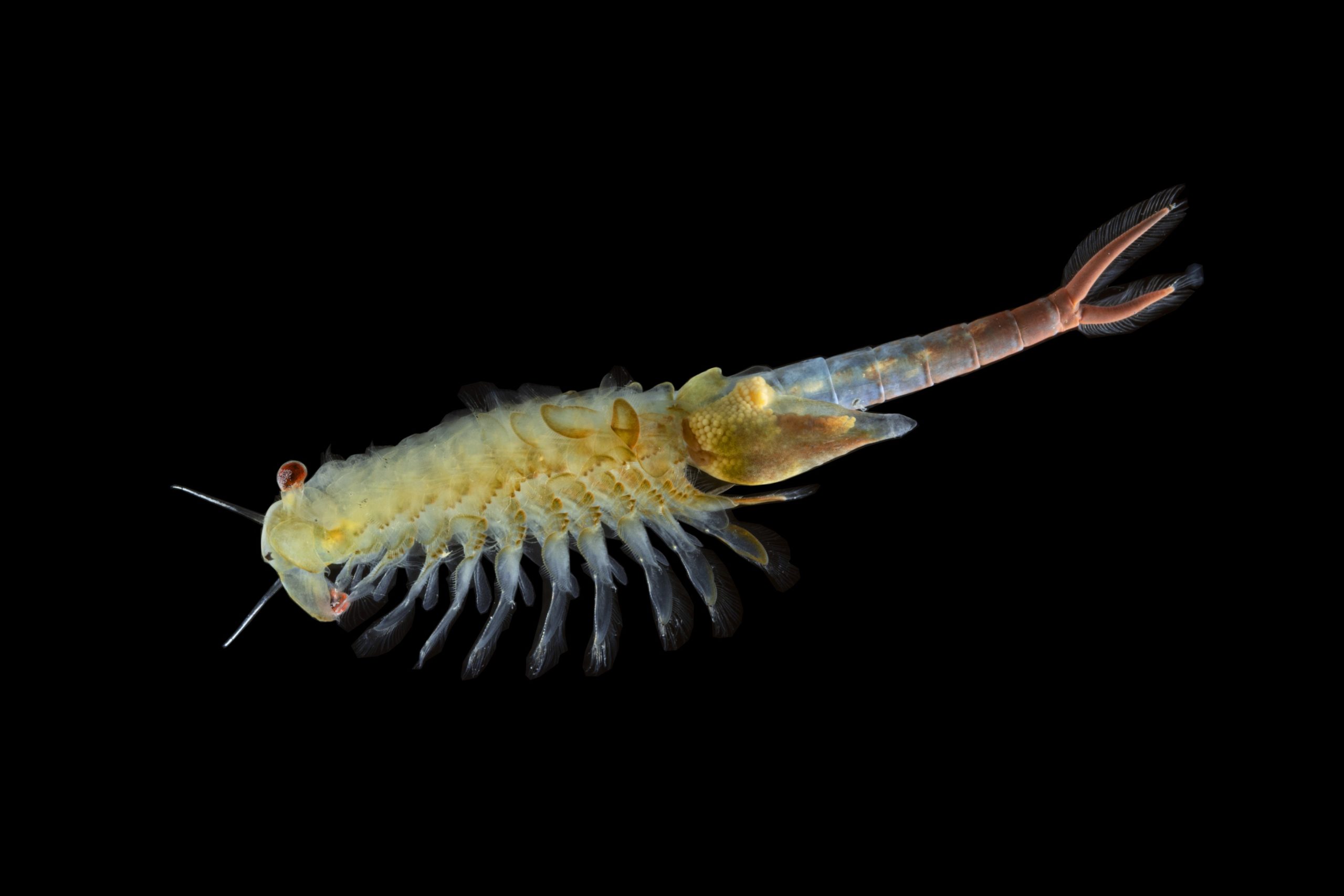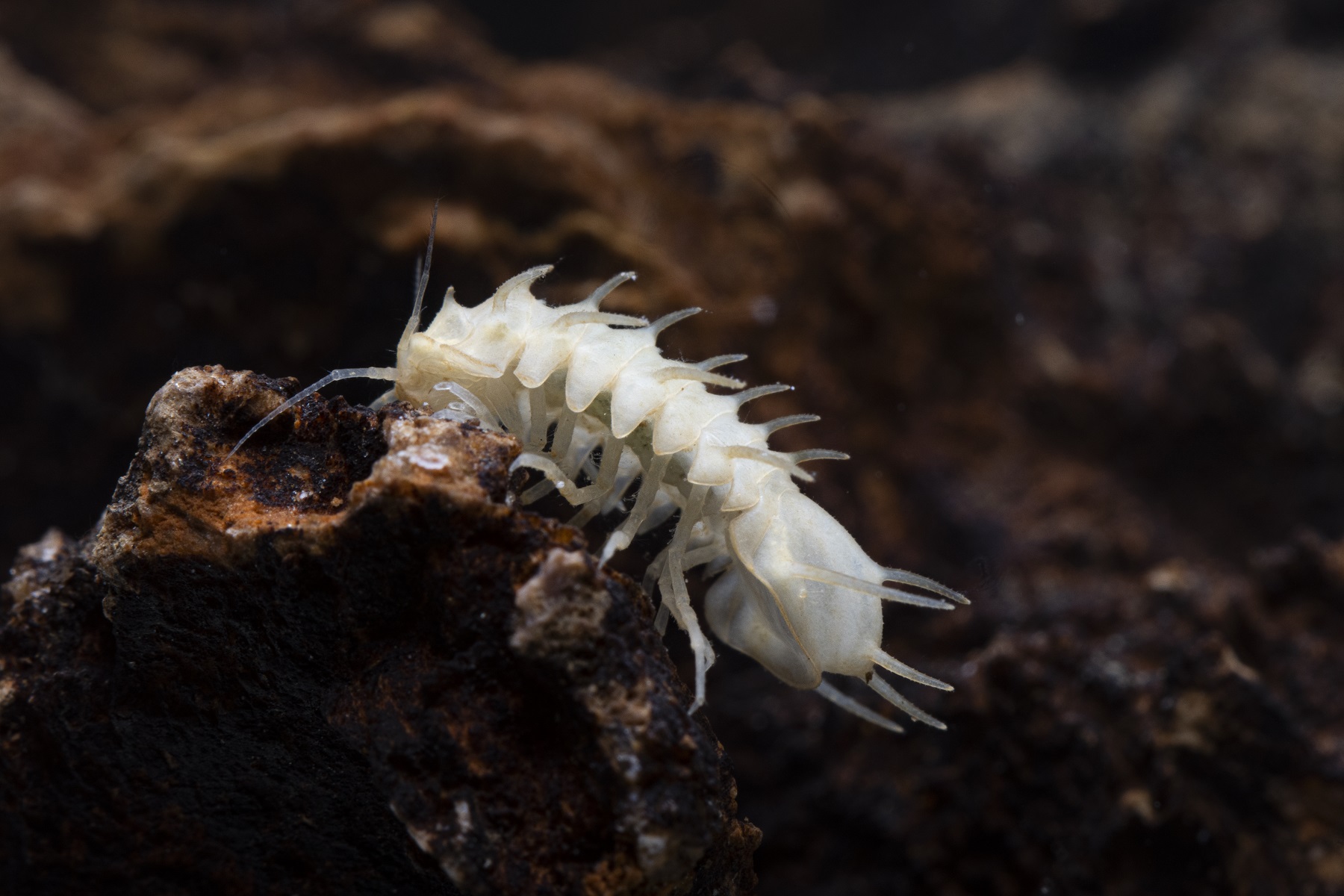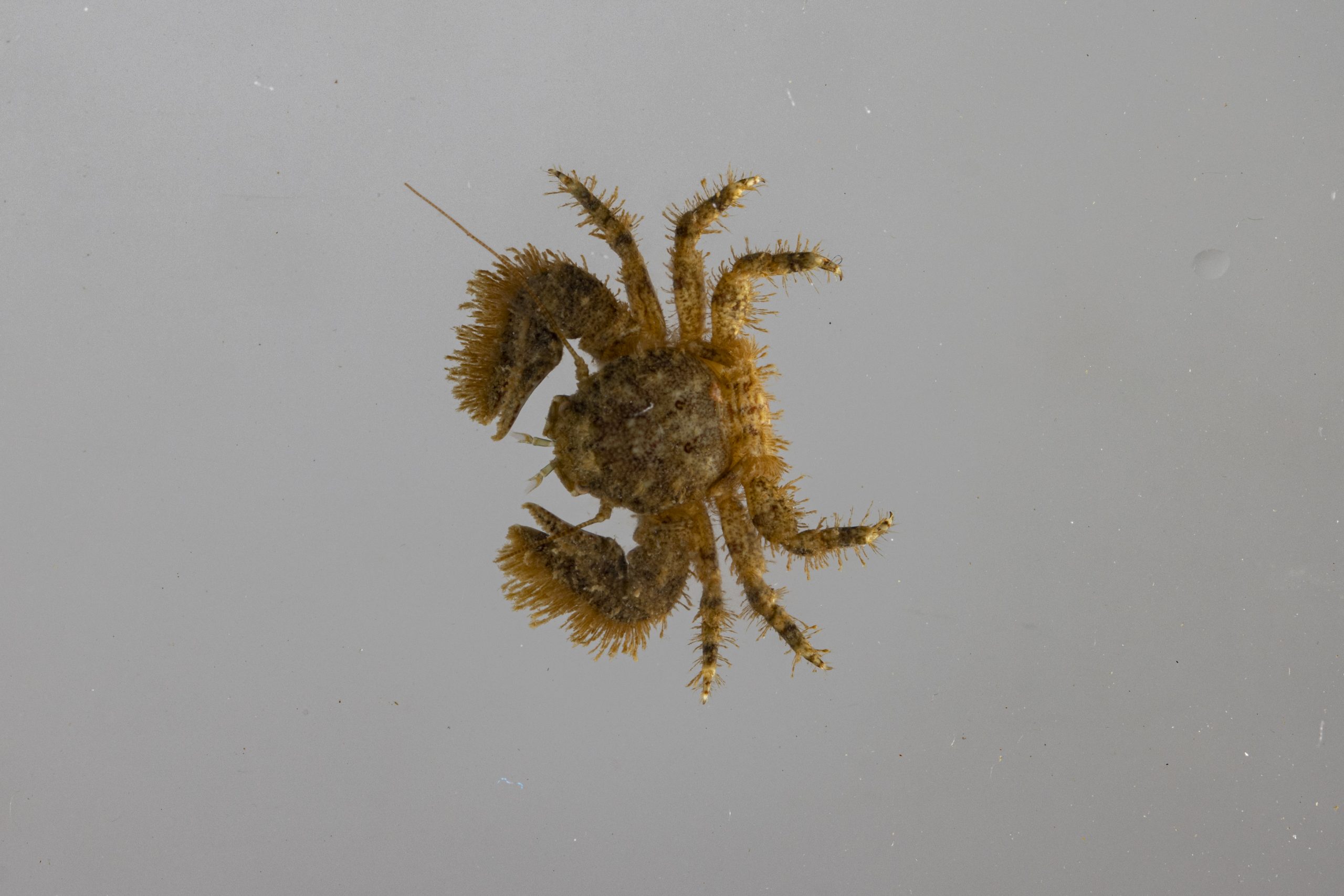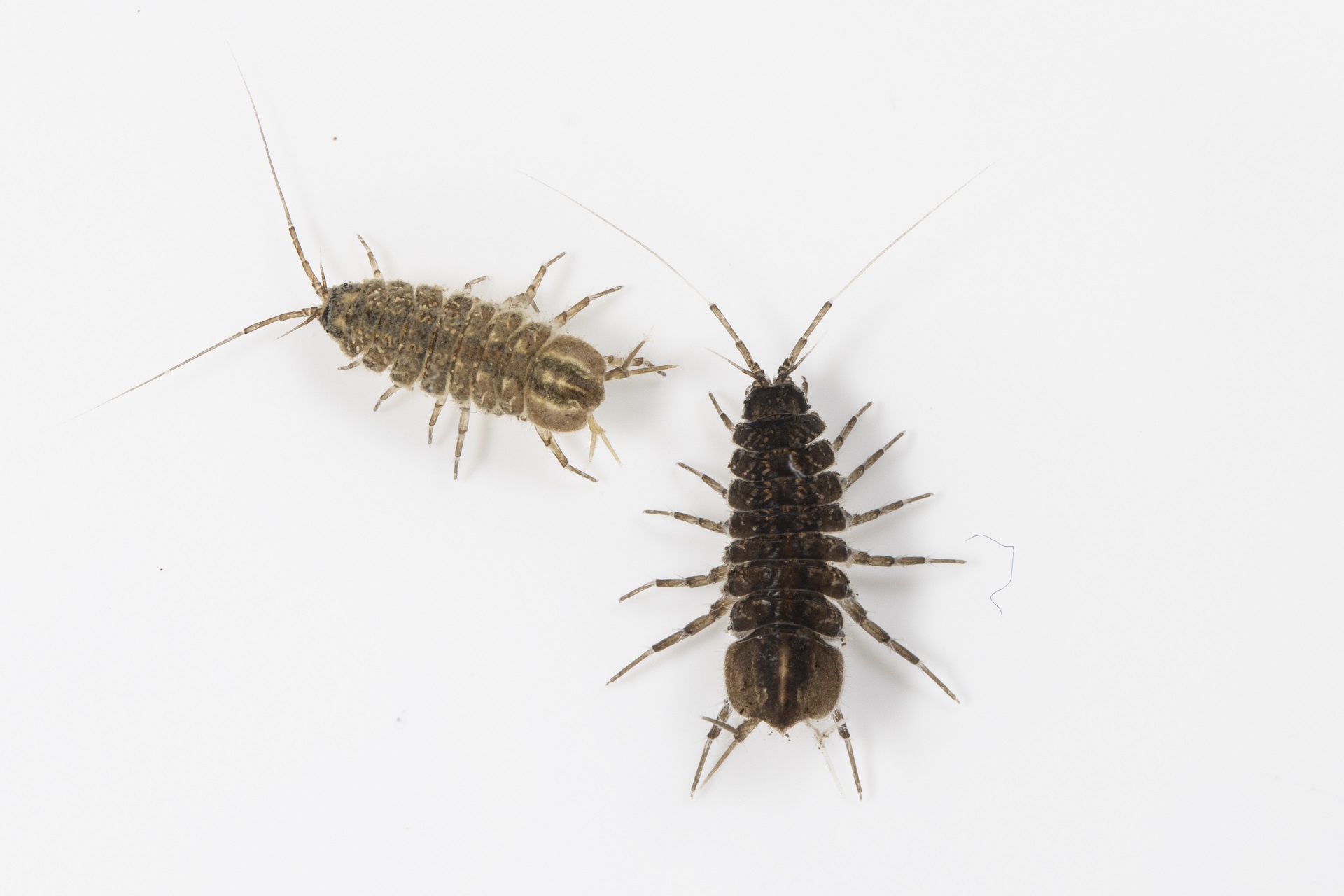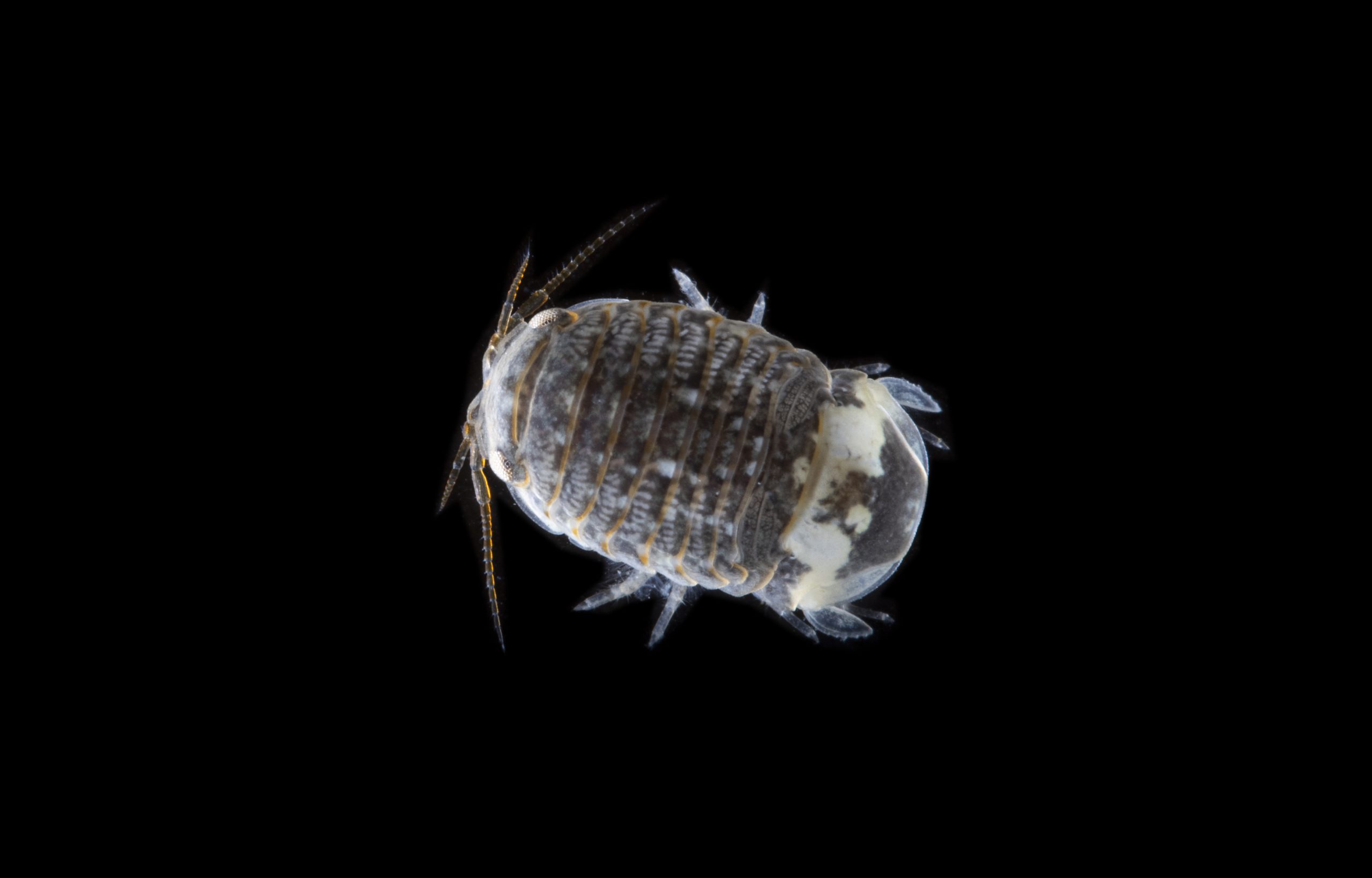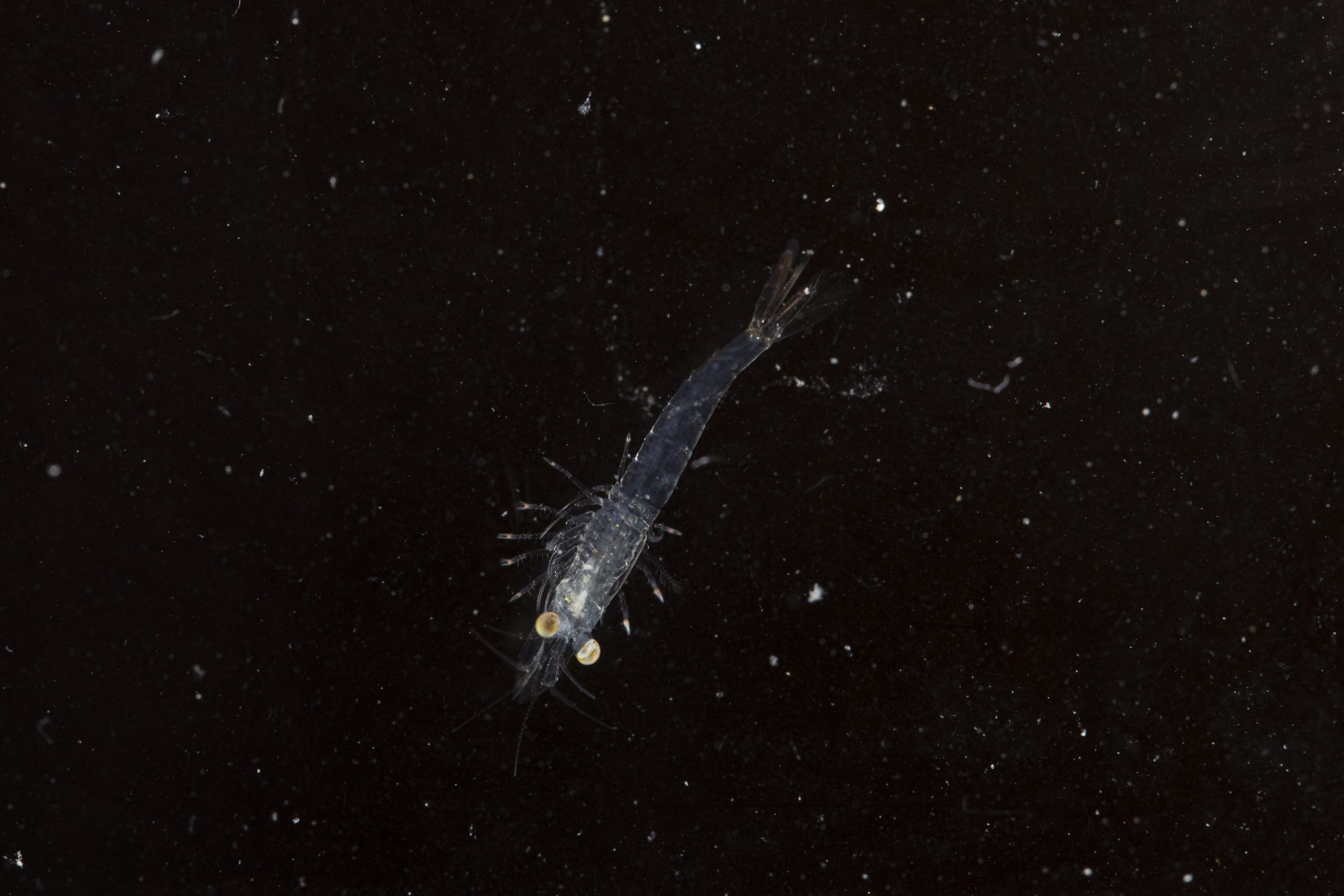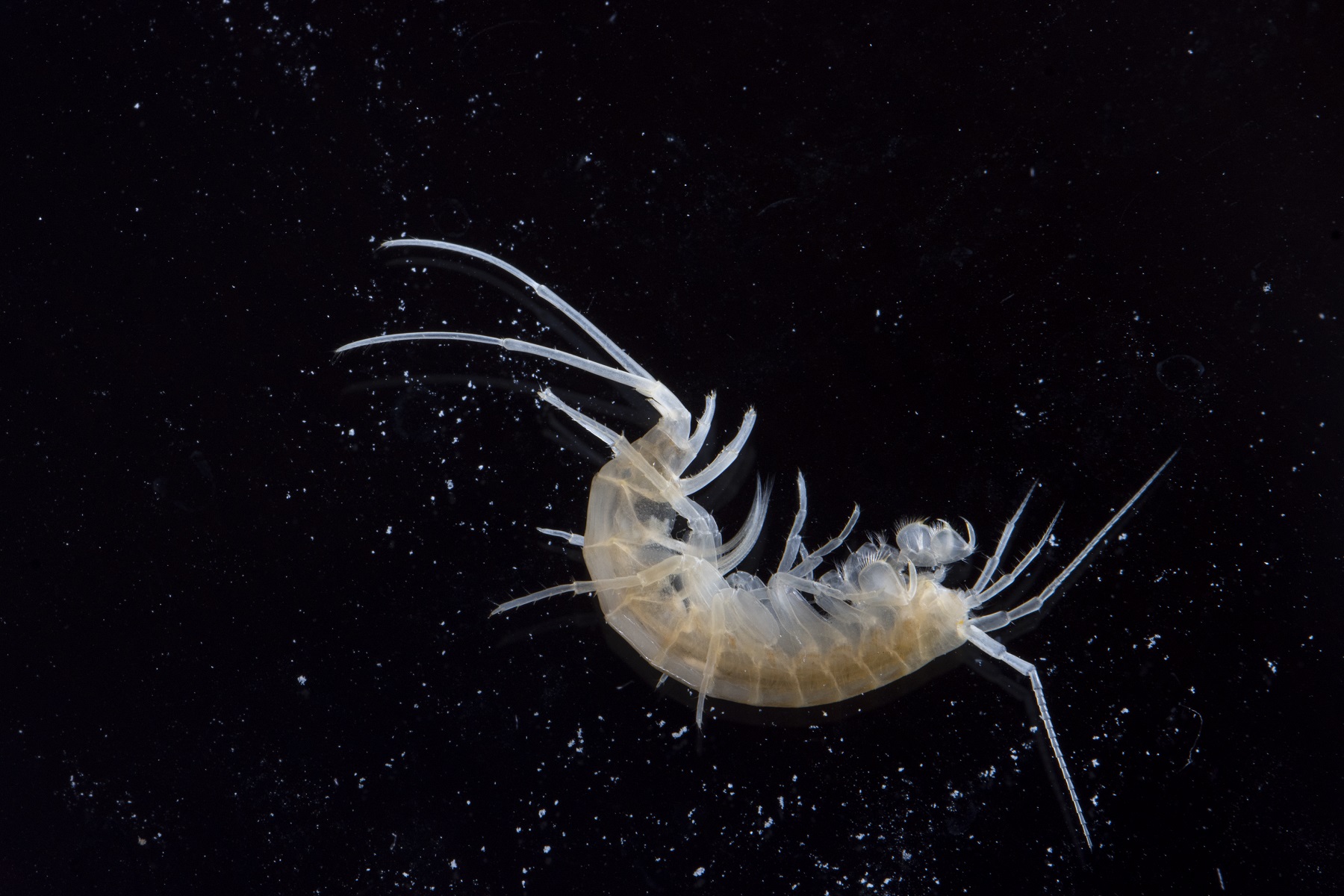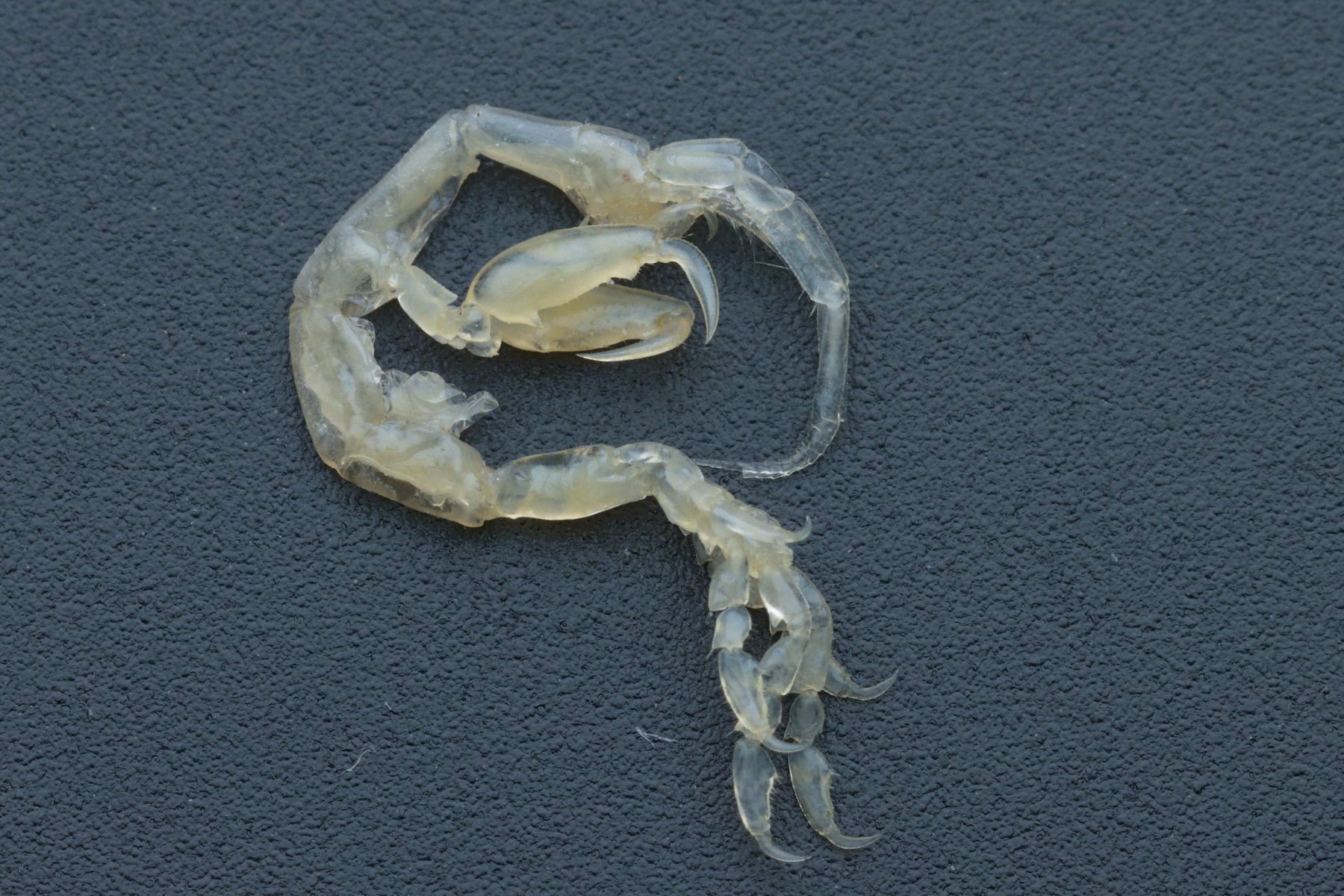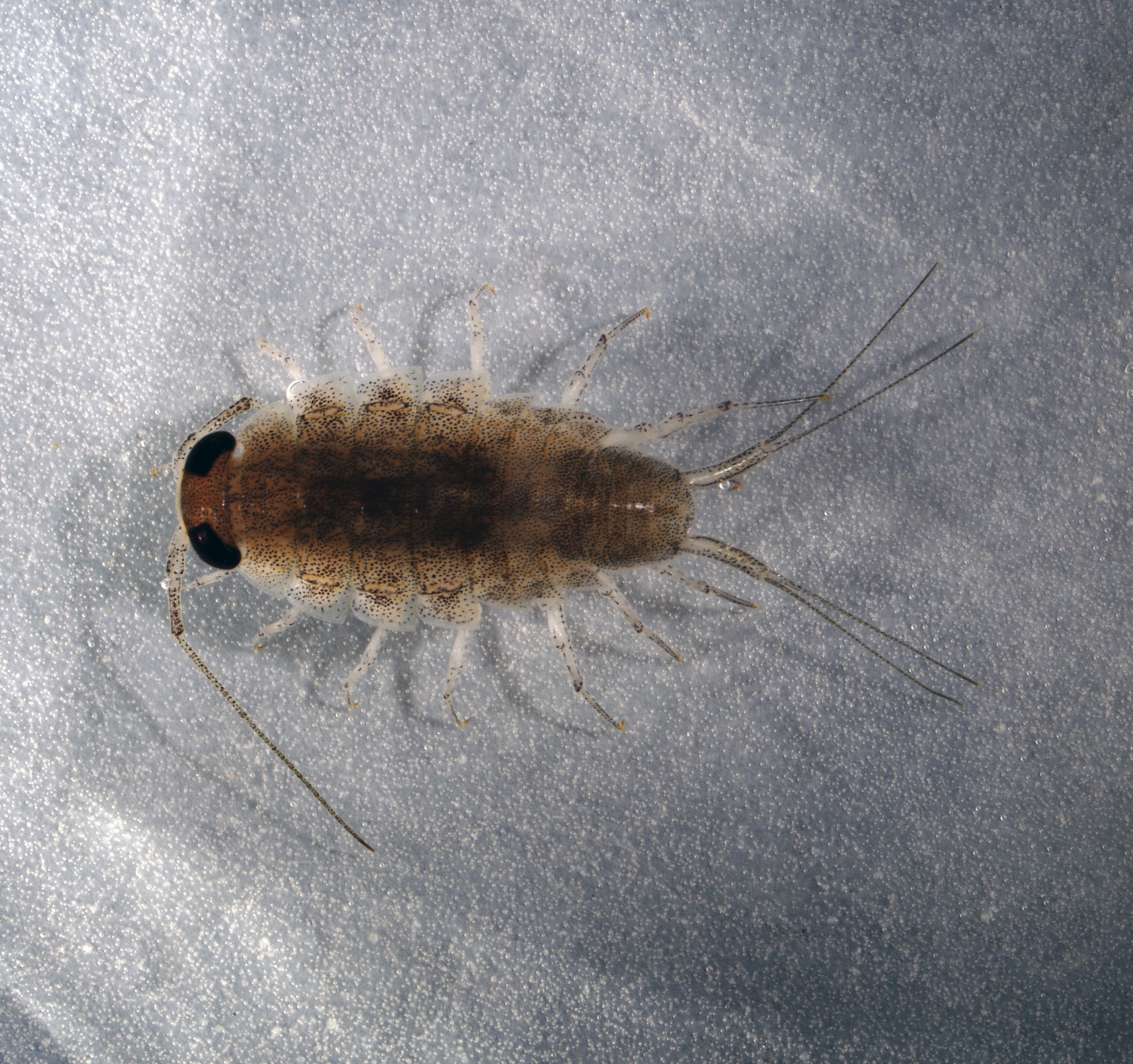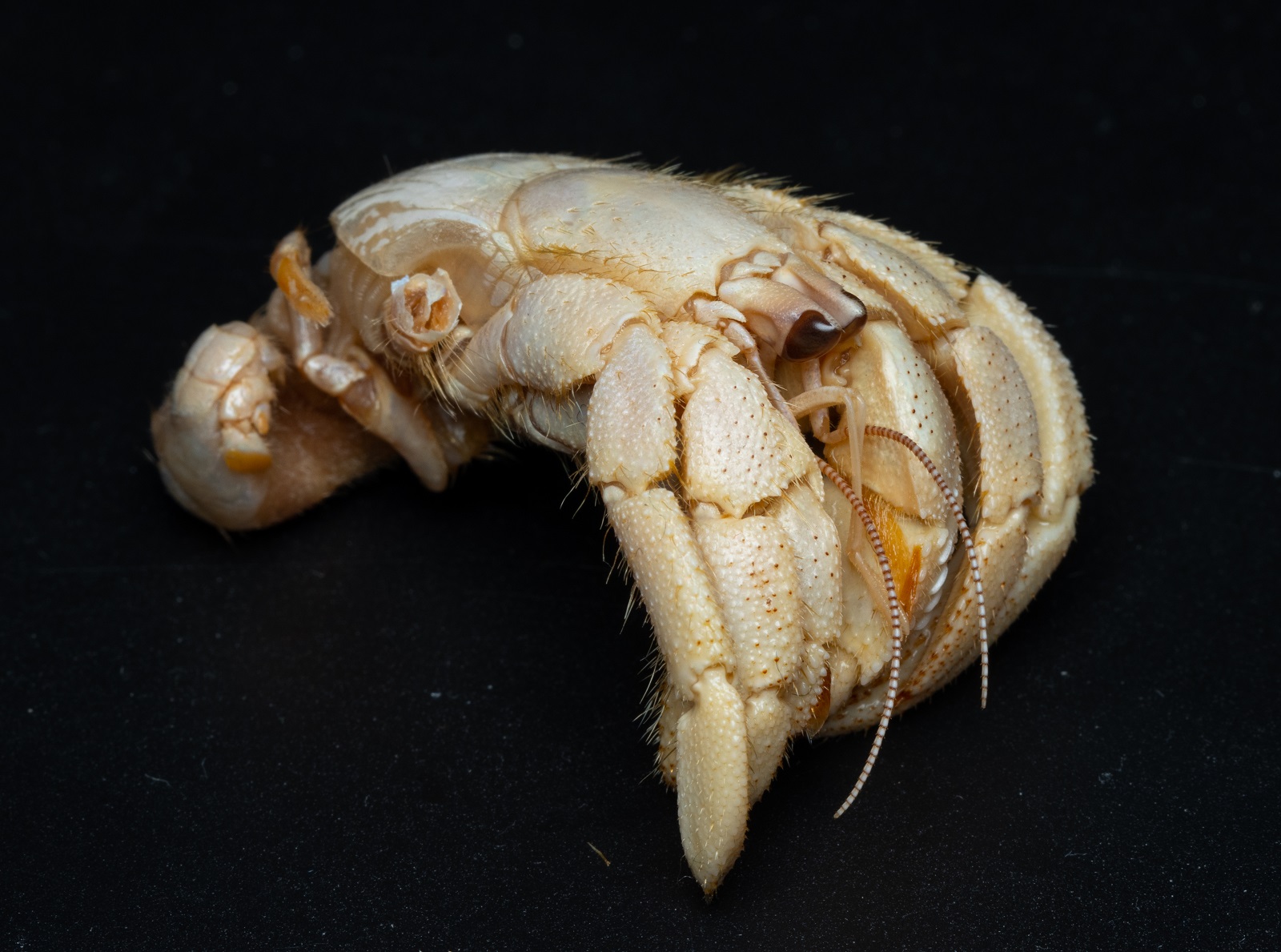- Crustaceans
Porcellio scaber
The body plan and appendages in common rough woodlouse are similar as in other terrestrial isopods (Oniscidea). The body consists of a cephalothorax containing six body segments, a pereon containing seven segments and an abdomen (pleon) containing six segments.
The cephalothorax bears two pairs of antennae. The first pair of antennae in common rough woodlouse is microscopic whereas the second pair is large and powerful. Besides its sensory function the second pair of antennae aids the animal to turn back to its legs if it accidentally lands on its back. The cephalothorax has three plate-like frontal lobes and mouthparts including a pair of mandibles, two pairs of maxillae and a pair of maxillipeds.
The seven segments of pereon are wide with large plate-like epimeres on their lateral edges. Each segment of pereon bears a pair of walking legs which are all similar in appearance.
The abdomen (pleon) is as wide as the pereon. The last abdominal segment is fused with telson, and the first two abdominal segments are greatly reduced in size, thus the epimeres are visible only on the third, fourth and fifth abdominal segments. The first five abdominal segments each carry a pair of flat biramous pleopods. Their hardened exopods (external branches) protect the soft endopods (internal branches). On the first two pairs of pleopods the pleopodal lungs are located which are branched invaginations of the exopodite’s integument. The last abdominal segment carries a pair of biramous uropods with large and stocky exopods.
The common rough woodlouse is native to Europe although it colonized other parts of the world largely through human activity. In Slovenia it is common in anthropogenic habitats, while more to the north it commonly inhabits wooded areas. It is adapted to the terrestrial lifestyle and is one of the more desiccation tolerant oniscideans. It avoids water and drowns in a few hours if submerged. The common rough woodlouse is active primarily at night, during the day it stays in hiding spots beneath the decaying wood and stones.
The common rough woodlouse feeds mostly on the decaying plat material. It retreats if disturbed, however it is not particularly fast. Its main defense mechanism against predators is clinging to the substrate with pereopods. While clinging, its wide and flat body prevents to be easily turned over, thus its soft ventral side is safely protected by a thick, hard and mineralized exoskeleton covering its dorsal side. If attacked it can extrude sticky liquid from specialized glands in the uropods. Similar glands are present also on the epimeres, but their secretions are not sticky.
The early development of common rough woodlouse takes place in a marsupium on the ventral side of the pereon of a gravid female, as in other isopod crustaceans. Juveniles with only six segments of pereon carrying six pairs of pereopods are released from the marsupium into the external environment. The seventh segment of the pereon and its leg pair develop gradually in the course of the first three molts.
More photos
Related arthropods

Authors
- Urban Bogataj,
- Gregor Bračko,
- Teo Delič,
- Cene Fišer,
- Žiga Fišer,
- Rok Kostanjšek,
- Rudi Verovnik,
- Miloš Vittori,
- Valerija Zakšek.
Students Vito Ham, Vesna Jurjevič, Gaj Kušar, and Adrijan Samuel Stell Pičman also participated in the project.

